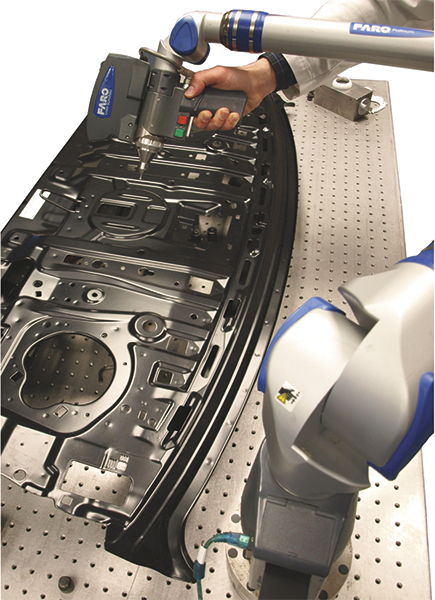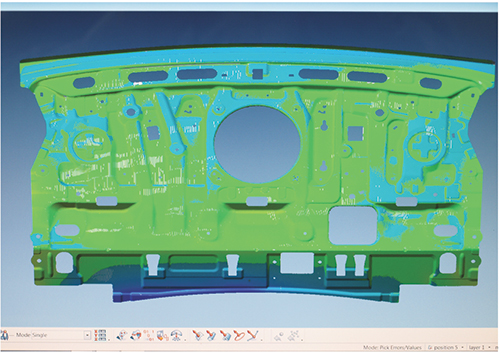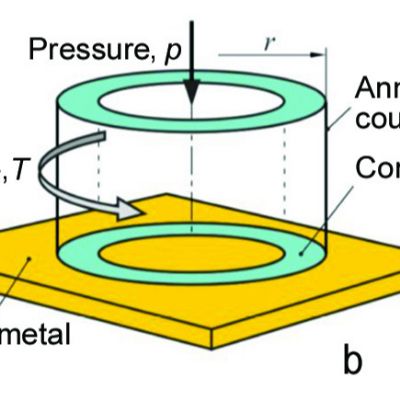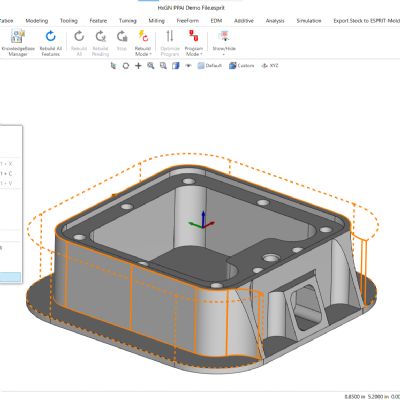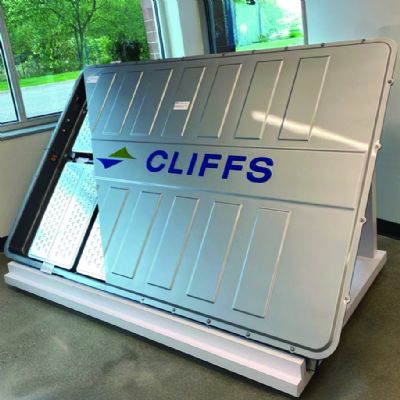Scanning Captures Toolmaker’s “Magic”
As much as its new software tools have enhanced the strip- and die-development process at ATD, the firm still must continue to work to overcome challenges related to increased part and assembly complexity, and the slew of new steels finding their into automobiles. Here, more often than not a toolmaker must “work his magic,” says Andras, “and perform handwork on one or more die stations to get a die to run flawlessly in the press.”
Such “magic” often renders die stations notably altered from their original CAD models. The inability to capture the result of these die-development activities often causes die-design data to be inaccurate at best and unusable at worst. In 2002, ATD purchased its first FaroArm capable of scanning form and cutting edges. In 2009, a new FaroArm was purchased, along with a laser scanner to capture the magic. ATD engineers employ the machine to acquire surface data and enable reverse engineering of die surfaces. This device has proven to be so useful that ATD acquired a second ScanArm for its Seville, OH facility. In addition, ATD has added a third machine for its sister facility in China. This allows designs to be easily updated after the tryout and development activity has been completed, which guarantees complete and accurate tool designs for each stamping tool produced.
“The ScanArm helped build our confidence in the simulation software,” explains Andras. “For example, we recently brought in a takeover tool that, when we ran a simulation of the forming operation the software predicted the part would split. But, in reality the die ran just fine in our press. We figured that the form tools did not match the CAD models, and proved that theory by using the ScanArm to scan the form tools. Using PolyWorks (parametric software for 3D metrology/reverse engineering applications), we back-fed the new surface data into Dynaform and ran the simulation again. It was incredible how accurate the revised simulation matched actual results in the press.”
Faro designed the ScanArm to offer users the ability to combine the benefits of contact and noncontact scanning. Its product literature states that “the ScanArm’s hard probe and the Laser Line Probe can digitize interchangeably without having to remove either component. Users can accurately measure prismatic features with the hard probe, then laser scan sections requiring larger volumes of data.”
Andras also explains that ATD uses its ScanArms to scan some of its more intricate stamped parts, “to capture features not easily rendered with a conventional CMM,” he says. “We can scan intricate features, enlarge them on the screen and run cross-sections through them for metrology and color mapping deviations.” MFView Glossary of Metalforming Terms
See also: Faro Technologies Inc., ETA (Engineering Technology Associates, Inc.), Vero Software
Technologies: Quality Control, Software, Tooling







